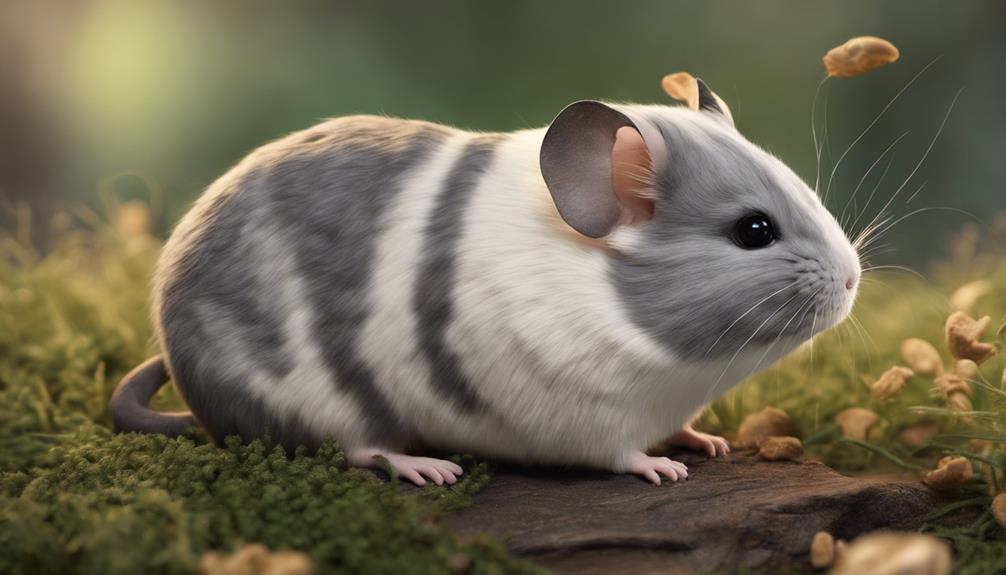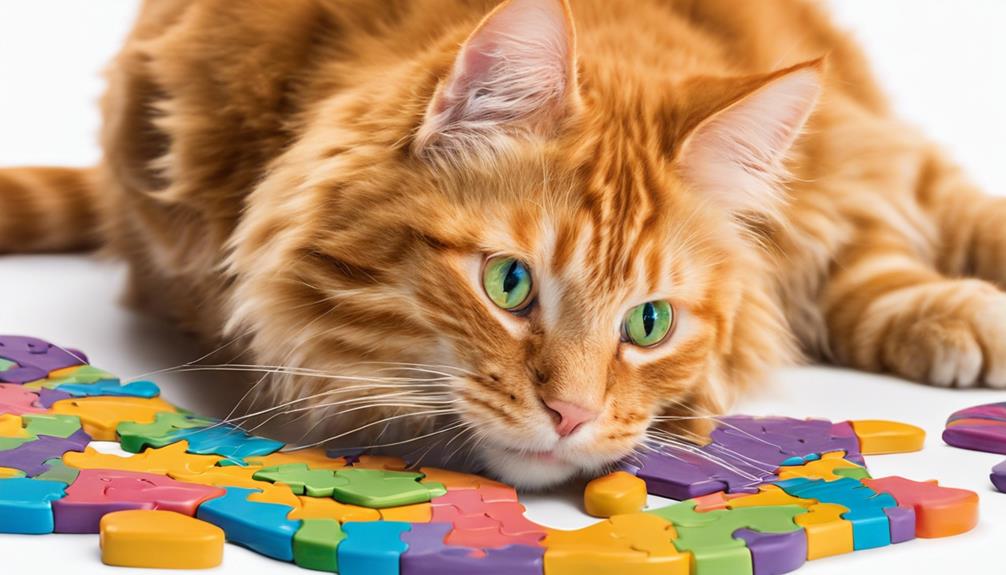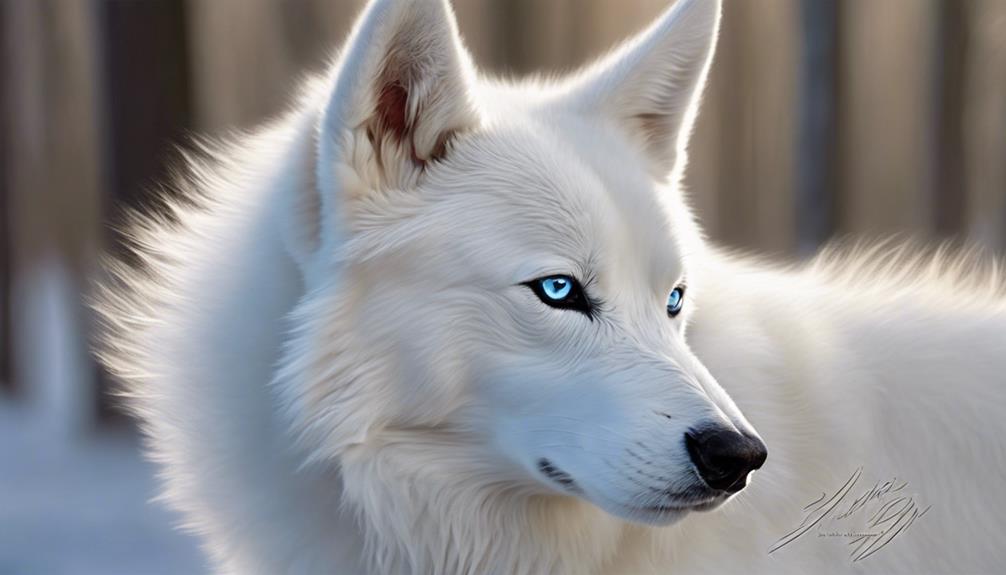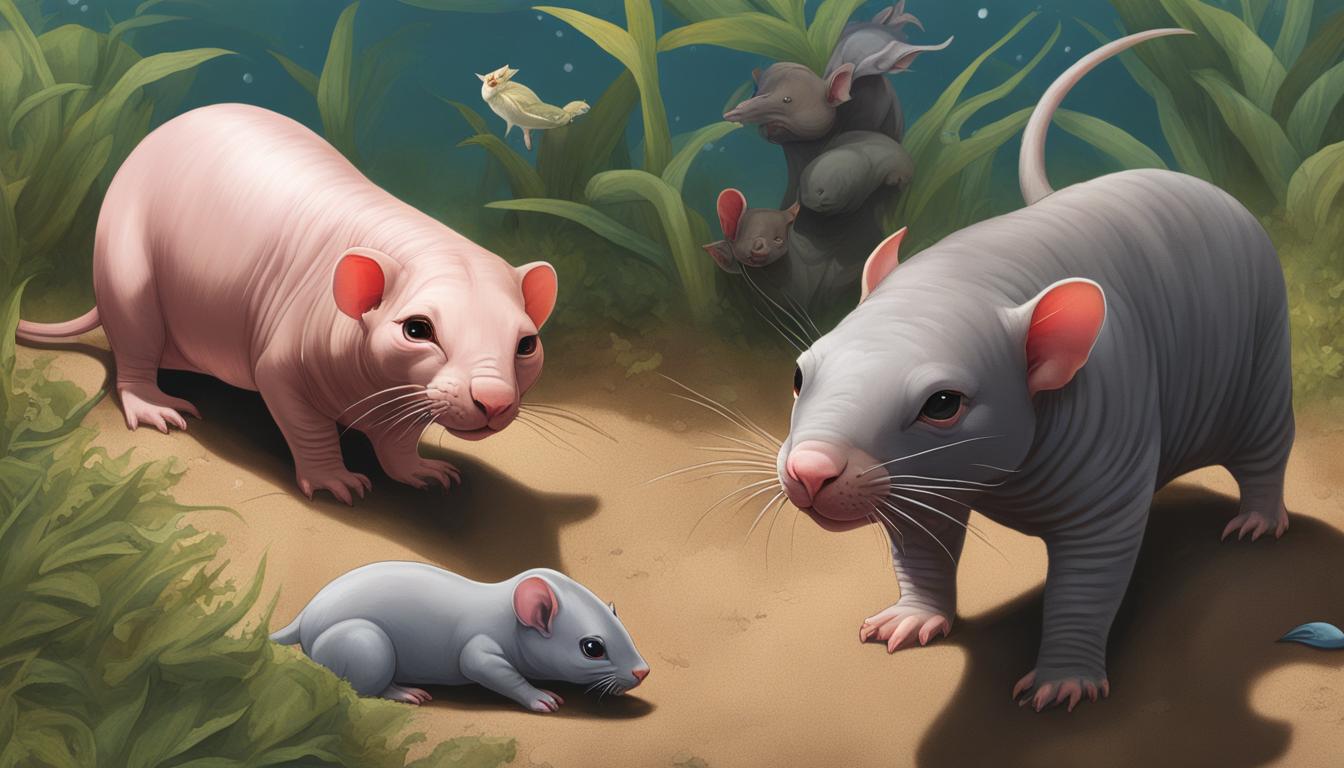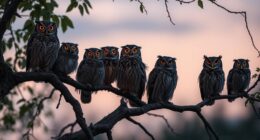Curious about animals like hamsters? Gerbils are playful with longer lifespans. Guinea pigs, fluffy and charming, need big cages. Mice, nocturnal and small, share hamster size. Degus look like hamsters, live 5-8 years, and enjoy veggies. Chipmunks have stripes and are diurnal, primarily in North America. Prairie dogs, with complex social lives, help ecosystems. Dormice are furry with hibernation habits and forest homes. If you want to explore more lookalikes, keep on discovering!
Key Takeaways
- Gerbils: Playful hamster lookalikes with a longer lifespan of up to 5 years.
- Guinea Pigs: Fluffy hamster resemblance, charming appearance, and rewarding companionship for families.
- Mice: Small rodents similar in size to hamsters, nocturnal with peak activity at night.
- Degus: Resemble hamsters, live 5-8 years, social nature, and thrive in pairs or small groups.
- Chipmunks: Energetic hamster lookalikes with distinctive stripes, curious and lively behavior.
Gerbils: Cute Hamster Lookalikes
As a pet owner curious about animals that resemble hamsters, I find gerbils to be delightful creatures with a striking resemblance to hamsters but with some unique characteristics. Gerbils, these playful hamster lookalikes, aren't only adorable but also have a longer lifespan of up to 5 years, making them wonderful long-term companions.
One key difference is that gerbils require larger cages due to their high energy levels and playful nature. These larger enclosures provide ample space for them to run, dig, and play, enhancing their overall well-being.
The energetic behavior of gerbils, with their quick movements and powerful hind legs, adds to their playful personalities. Their active nature makes them entertaining to watch and interact with, bringing joy to any household. Despite their playful demeanor, gerbils are relatively low maintenance pets, making them suitable for pet owners of various experience levels.
Guinea Pigs: Fluffy Resemblance to Hamsters
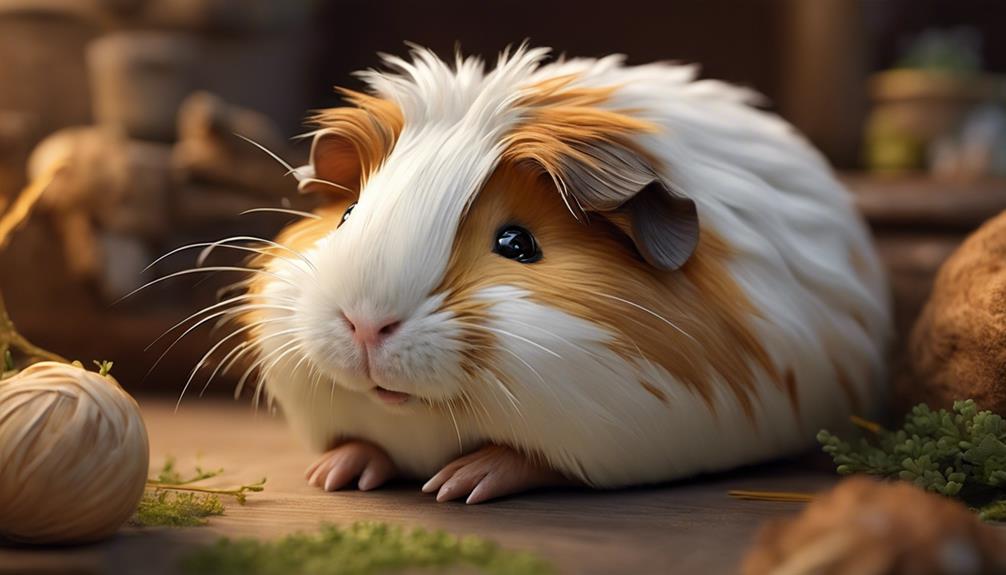
Guinea pigs, also known as cavies, share a fluffy resemblance to hamsters but have distinct differences. Their short fur coats and friendly nature make them popular pets, similar to hamsters.
Despite their similarities, guinea pigs require larger cages due to their size, showcasing their unique needs compared to their smaller hamster counterparts.
Guinea Pig Similarities
Guaranteeing their fluffy fur and charming appearance, guinea pigs bear a striking resemblance to hamsters. Both these pet rodents belong to the same family, known as the Caviidae family, which includes various species of small rodents. Guinea pigs and hamsters share similar body shapes, featuring rounded bodies and short legs that enhance their cuteness factor.
While hamsters are recognized for their cheek pouches, guinea pigs exhibit unique traits like vocalizations and social behaviors that set them apart. Providing both guinea pigs and hamsters with specific diets, habitats, and care is crucial to their well-being. Responsible ownership of these adorable animals can be incredibly rewarding for families seeking delightful companions.
Physical Resemblances
While larger in size, the fluffy resemblance between guinea pigs and hamsters enhances their appeal as charming and cuddly pets. These small animals share similarities in their physical appearance, including round bodies, cute furry faces, and a variety of colors in their coats.
Molecular phylogeny studies suggest close relationships within the rodent family, explaining why guinea pigs and hamsters exhibit such resemblances. The fluffy coat of guinea pigs mirrors the soft fur of hamsters, adding to their visual similarity.
Despite their size difference, both species possess an endearing charm that makes them popular choices for pet owners seeking adorable companions. The cuddly and adorable demeanor of guinea pigs further emphasizes their appeal, akin to that of their hamster counterparts.
Mice: Tiny Creatures Similar to Hamsters
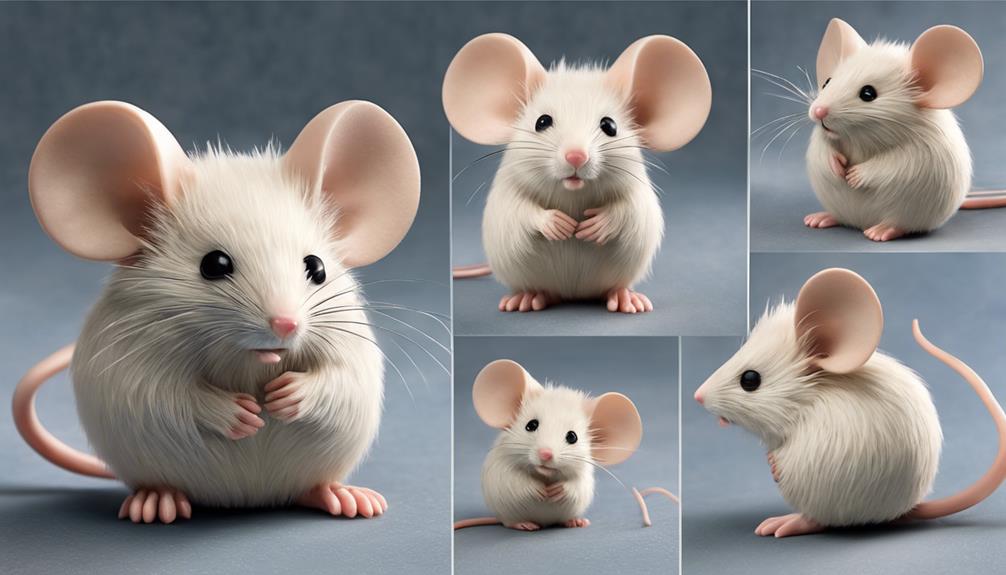
Mice, like hamsters, are small rodents that share similarities in size and appearance. They both have round bodies, pointed snouts, and fur in various colors, resembling miniature versions of each other.
However, differences exist in their behavior, diet, and care requirements, making each species unique in its own right.
Mice Vs. Hamsters
Comparing mice to hamsters reveals striking similarities in their size and behavior, making them tiny creatures that share many characteristics. Both rodents, mice and hamsters are popular pets due to their manageable size and playful nature. While mice typically measure 2.5 to 4 inches in length, similar to hamsters, they can be distinguished by their longer tails.
These small creatures have incisors that continuously grow, necessitating gnawing to prevent overgrowth. Mice exhibit remarkable agility and can squeeze through narrow openings, akin to hamsters' burrowing tendencies. Additionally, both species are nocturnal, showing peak activity levels during the night.
Whether opting for a mouse or a hamster, pet owners can enjoy the companionship and entertainment provided by these charming rodents.
Size and Habitat
In examining the size and habitat of mice, it becomes evident that these tiny creatures share striking similarities with hamsters. Mice, like hamsters, are small rodents with body lengths typically ranging from 2.5 to 3.75 inches. They're versatile in their habitats, thriving in fields, forests, and even urban settings.
Exploring their phylogenetic position and evolutionary history through molecular phylogeny reveals their close relation to other speciose mammals. Despite their resemblance to hamsters, mice have distinct characteristics and behaviors that define them as a separate species. Their agile movements and ability to navigate through small openings showcase their adaptability and resourcefulness.
Understanding the nuances of their size and habitat provides valuable insights into the diverse world of these fascinating rodents.
Behavior and Diet
As a small rodent with agile movements and quick reflexes, I share a similar diet with hamsters, consuming seeds, grains, fruits, and vegetables. Mice, being omnivores like hamsters, thrive on a varied diet that provides essential nutrients for their energy and growth.
These tiny creatures, known for their burrowing behaviors, create intricate tunnel systems similar to hamsters, using them for shelter and protection. In addition, mice exhibit social tendencies akin to hamsters, forming hierarchical structures within their groups.
These social animals engage in both cooperative and competitive behaviors, showcasing their complex social interactions. Understanding the behavior and diet of mice can offer insights into their natural tendencies and requirements for ideal care and well-being.
Degus: Lesser-Known Hamster Doppelgangers
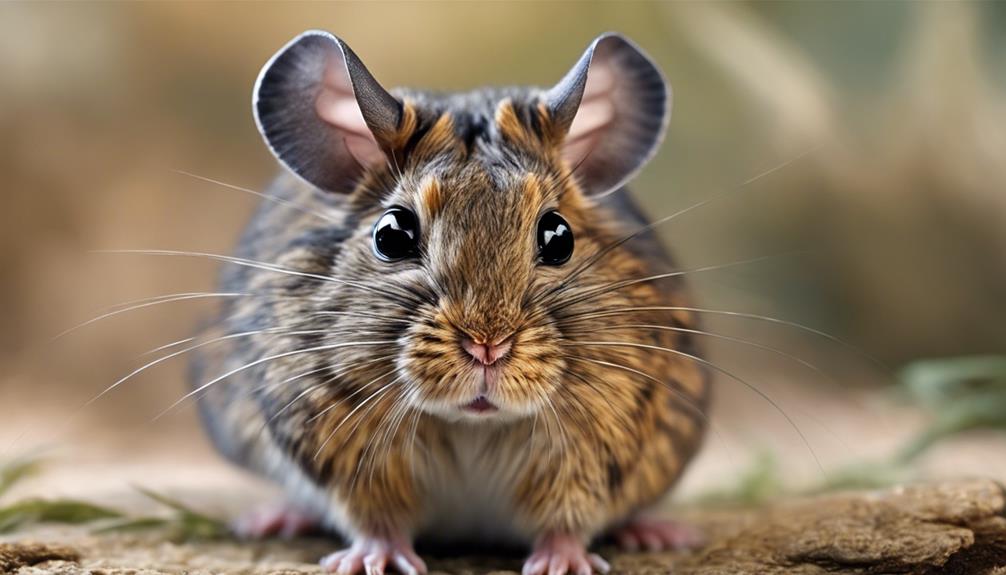
Resembling hamsters but belonging to a different species, Degus are small rodents known as Octodon degus. These social animals are native to Chile and are known for their friendly and curious nature.
Here are some key points to understand more about these fascinating creatures:
- Lifespan and Care: Degus typically live for 5-8 years in captivity. To guarantee their well-being, provide them with a spacious cage that allows for exercise and mental stimulation.
- Diet: Their diet mainly consists of hay, fresh vegetables, and a small amount of commercial rodent food. This balanced diet is essential for their nutrition and health.
- Activity Patterns: Unlike hamsters, Degus are diurnal, meaning they're most active during the day. This can impact their interaction with owners and their daily routine.
- Behavior: Due to their social nature, Degus thrive in pairs or small groups. Providing them with companionship is vital for their mental and emotional well-being.
Chipmunks: Hamster Lookalikes With Stripes
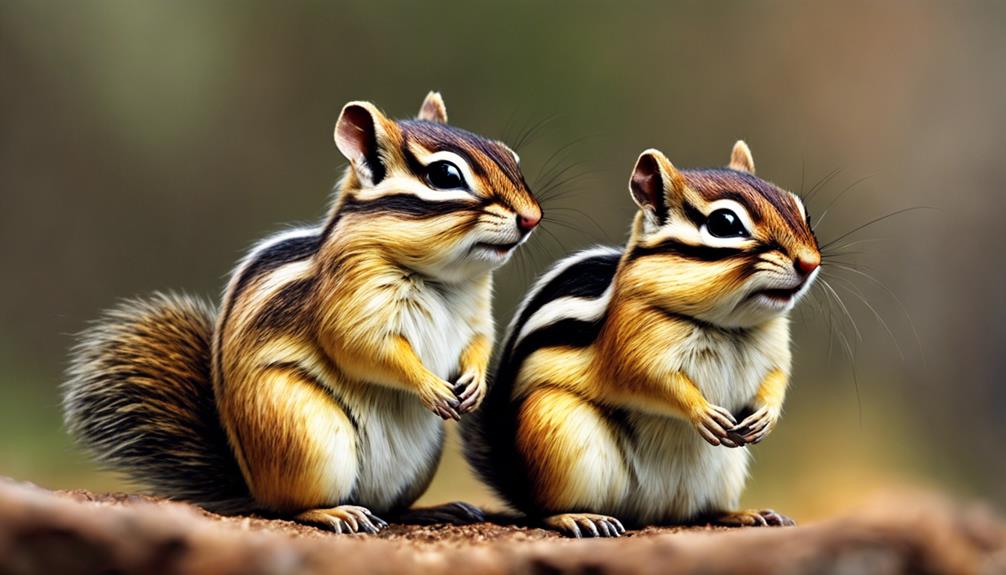
With their distinctive stripes and energetic behavior, chipmunks closely resemble hamsters but belong to a different rodent family known as Sciuridae. These small, striped rodents are easily recognizable by the contrasting stripes on their backs, adding a touch of uniqueness to their overall brown or gray fur color. One key feature that sets chipmunks apart from hamsters is their cheek pouches, which they use to store food efficiently. Chipmunks, with around 25 species primarily found in North America, are known for their curious and lively nature, making them fascinating creatures to observe.
Unlike hamsters, chipmunks are diurnal animals, meaning they're most active during the day. This behavior contrasts with hamsters, which are nocturnal and more active at night. The energetic antics and vibrant personalities of chipmunks make them a joyful addition to the rodent family. So next time you spot a small, striped rodent scurrying about, take a closer look – it might just be a chipmunk!
Prairie Dogs: Hamster-Like Burrowers
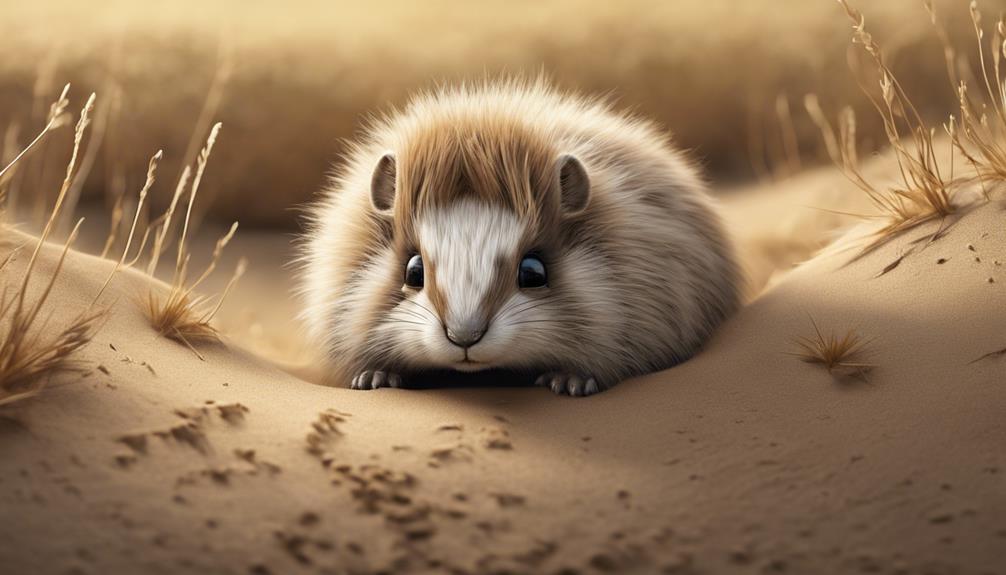
Prairie dogs, similar to hamsters in their burrowing habits, are social rodents known for their intricate underground tunnel systems. These burrowing rodents play an essential role in ecosystem maintenance, benefiting various species through their activities.
- Social Behavior: Prairie dogs exhibit complex social structures within their colonies, communicating through various vocalizations and behaviors to warn of danger and maintain cohesion.
- Burrowing Rodents: These animals are expert diggers, creating elaborate tunnel systems underground that serve as shelters, nurseries, and storage areas for food.
- Ecosystem Maintenance: Prairie dogs help aerate the soil through their digging, promoting plant growth and creating habitat for other animals like burrowing owls and snakes.
- Habitat and Distribution: Found primarily in North America's Great Plains region, prairie dogs are essential to the grasslands and prairies they inhabit, shaping the landscape and contributing to its biodiversity.
Dormice: Furry Hamster Lookalikes
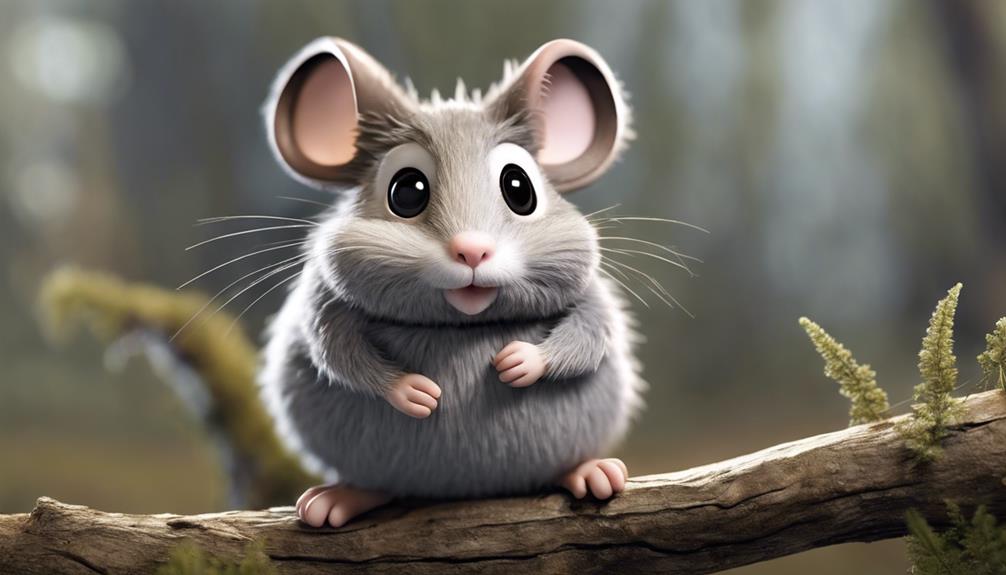
Closely resembling hamsters in appearance, Dormice are small rodents known for their furry coats and round bodies. Belonging to the family Gliridae, these creatures exhibit hibernation habits akin to some species of hamsters. With their large eyes, rounded ears, and bushy tails, dormice present a miniature version of the beloved hamster. Surprisingly, some dormice species, such as the edible dormouse, share a similar omnivorous diet with hamsters. These rodents are commonly found in Europe, Asia, and Africa, inhabiting various forested habitats reminiscent of those favored by hamsters.
Dormice's physical similarities to hamsters make them a fascinating subject for those intrigued by the adorable rodent family. Their hibernation habits add an extra layer of fascination to these creatures, showcasing their adaptability to different environmental conditions. Exploring the world of dormice can provide insight into the diverse and intriguing nature of rodents, shedding light on the unique characteristics that make them such captivating animals.
Frequently Asked Questions
What Animal Is Similar to a Hamster?
I think the animal that's similar to a hamster is the pocket gopher. It's small, round, and has cheek pouches for storing food. These creatures share similar traits with hamsters in appearance and behavior.
What Wild Animal Looks Like a Hamster?
When I spotted that wild creature, I couldn't believe my eyes! It looked just like a hamster but with a wild twist. Its furry body and round features had me captivated.
What Animal Looks Like a Rodent but Isn T?
I'll share about animals that resemble rodents but aren't. Some examples include the African pygmy hedgehog, sugar glider, tenrec, pika, and solenodon. These creatures may look like rodents, but they belong to different mammal groups.
What Is the Closest Relative to a Hamster?
The closest relative to a hamster is the common ancestor it shares with other rodents in the subfamily Cricetinae. Understanding these relationships helps in exploring their evolutionary journey and ecological adaptations within the rodent family tree.
Conclusion
To sum up, there are many animals that bear a striking resemblance to hamsters, from gerbils and guinea pigs to chipmunks and prairie dogs. These creatures may not be hamsters themselves, but they certainly share similar characteristics that make them just as adorable and fascinating to observe.
So next time you come across one of these hamster lookalikes, take a moment to appreciate the beauty and diversity of the animal kingdom. Who knows what other fascinating creatures are out there waiting to be discovered!
